Quantitative Evaluation of Eco-Environmental Protection Policy in the Yangtze River Economic Belt: A PMC-Index Model Approach
Abstract
:1. Introduction
2. Literature Review
2.1. Eco-Environmental Protection in YREB
2.2. Eco-Environmental Protection Policy
3. Research Design
3.1. Data Sources
3.2. Construction of the PMC-Index Model
3.2.1. Word Frequency Analysis and Variable Design
3.2.2. Constructing a Multi-Input–Output Table
3.2.3. PMC-Index Calculation and Evaluation Grade Classification
3.2.4. Construction of PMC-Surface Diagrams
4. Quantitative Analysis of Eco-Environmental Protection Policies in the YREB
4.1. Selection of Representative Policies
4.2. PMC-Index of 13 Representative Policies
4.3. Analysis of PMC-Surface for 13 Representative Policies
5. Discussion
6. Conclusions
Author Contributions
Funding
Institutional Review Board Statement
Informed Consent Statement
Data Availability Statement
Conflicts of Interest
References
- Bernauer, T.; Böhmelt, T. Basins at risk: Predicting international river basin conflict and cooperation. Glob. Environ. Politics 2014, 14, 116–138. [Google Scholar] [CrossRef]
- Zhao, C.; Wang, P.; Zhang, G. A comparison of integrated river basin management strategies: A global perspective. Phys. Chem. Earth Parts A/B/C 2015, 89, 10–17. [Google Scholar] [CrossRef]
- Xia, J.; Li, Z.; Zeng, S.; Zou, L.; She, D.; Cheng, D. Perspectives on eco-water security and sustainable development in the Yangtze River Basin. Geosci. Lett. 2021, 8, 18. [Google Scholar] [CrossRef]
- Li, W.; Wu, J.; Du, H.; Wan, Y.; Yang, S.; Xiao, Y.; Wang, L. Impact assessment of waterway development on the socioeconomic conditions and ecosystem in the upper Yangtze River. River Res. Appl. 2022, 38, 988–999. [Google Scholar] [CrossRef]
- Hu, S.; Song, W.; Li, C.; Zhang, C.H. The evolution of industrial agglomerations and specialization in the Yangtze River Delta from 1990–2018: An analysis based on firm-level big data. Sustainability 2019, 11, 5811. [Google Scholar] [CrossRef]
- Cui, X.; Cai, T.; Deng, W.; Zheng, R.; Jiang, Y.; Bao, H. Indicators for evaluating high-quality agricultural development: Empirical study from Yangtze River Economic Belt, China. Soc. Indic. Res. 2022, 164, 1101–1127. [Google Scholar] [CrossRef] [PubMed]
- Chen, Y.; Zhang, S.; Huang, D.; Li, B.L.; Liu, J.; Liu, W.; Ma, J.; Wang, F.; Wang, Y.; Wu, S.; et al. The development of China’s Yangtze River Economic Belt: How to make it in a green way. Sci. Bull. 2017, 62, 648–651. [Google Scholar] [CrossRef]
- Braun, D. Organising the political coordination of knowledge and innovation policies. Sci. Public Policy. 2008, 35, 227–239. [Google Scholar] [CrossRef]
- Dinda, S. Environmental Kuznets curve hypothesis: A survey. Ecol. Econ. 2004, 49, 431–455. [Google Scholar] [CrossRef]
- Andreichyk, A.; Tsvetkov, P. Study of the Relationship between Economic Growth and Greenhouse Gas Emissions of the Shanghai Cooperation organisation Countries on the Basis of the Environmental Kuznets Curve. Resources 2023, 12, 80. [Google Scholar] [CrossRef]
- Jin, C.; Liu, Y.; Li, Z.; Gong, R.; Huang, M.; Wen, J. Ecological consequences of China’s regional development strategy: Evidence from water ecological footprint in Yangtze River Economic Belt. Environ. Dev. Sustain. 2022, 24, 13732–13747. [Google Scholar] [CrossRef]
- Liu, J.; Tian, Y.; Huang, K.; Yi, T. Spatial-temporal differentiation of the coupling coordinated development of regional energy-economy-ecology system: A case study of the Yangtze River Economic Belt. Ecol. Indic. 2021, 124, 107394. [Google Scholar] [CrossRef]
- Wang, Z.; Fang, C.; Cheng, S.; Wang, J. Evolution of coordination degree of eco-economic system and early-warning in the Yangtze River Delta. J. Geogr. Sci. 2013, 23, 147–162. [Google Scholar] [CrossRef]
- Yang, Y.; Lu, H.; Liang, D.; Chen, Y.; Tian, P.; Xia, J.; Wang, H.; Lei, X. Ecological sustainability and its driving factor of urban agglomerations in the Yangtze River Economic Belt based on three-dimensional ecological footprint analysis. J. Clean. Prod. 2022, 330, 129802. [Google Scholar] [CrossRef]
- Zhao, J.; Zhao, Y. Synergy/trade-offs and differential optimization of production, living, and ecological functions in the Yangtze River economic Belt, China. Ecol. Indic. 2023, 147, 109925. [Google Scholar] [CrossRef]
- Ma, X.; Li, Y.; Zhang, X.; Wang, C.; Li, Y.; Dong, B.; Gu, Y. Research on the ecological efficiency of the Yangtze River Delta region in China from the perspective of sustainable development of the economy-energy-environment (3E) system. Environ. Sci. Pollut. Res. 2018, 25, 29192–29207. [Google Scholar] [CrossRef] [PubMed]
- Robert, K.W.; Parris, T.M.; Leiserowitz, A.A. What is sustainable development? Goals, indicators, values, and practice. Environ. Sci. Policy Sustain. Dev. 2005, 47, 8–21. [Google Scholar] [CrossRef]
- Russell, E.P., III. Lost Among the Parts Per Billion: Ecological Protection at the United States Environmental Protection Agency, 1970–1993. Environ. Hist. 1997, 2, 29–51. [Google Scholar] [CrossRef]
- Xie, Z. China’s historical evolution of environmental protection along with the forty years’ reform and opening-up. Environ. Sci. Ecotechnol. 2020, 1, 100001. [Google Scholar] [CrossRef]
- Yin, Y.; Hou, Y.; Langford, C.; Bai, H.; Hou, X. Herder stocking rate and household income under the Grassland Ecological Protection Award Policy in northern China. Land Use Policy 2019, 82, 120–129. [Google Scholar] [CrossRef]
- Girma, W.; Beyene, F. Willingness to contribute to collective forest management: Evidence from Godere in the Gambela Region of Ethiopia. J. Socio Econ. 2012, 41, 79–86. [Google Scholar] [CrossRef]
- Tsang, S.; Kolk, A. The evolution of Chinese policies and governance structures on environment, energy and climate. Environ. Policy Gov. 2010, 20, 180–196. [Google Scholar] [CrossRef]
- Zhao, H.; Gu, X.; Yang, T.; Gu, B. Evolutionary Logic and Development Foresight of Environmental Collaborative Governance Policy in the Yangtze River Delta. Land 2022, 11, 1404. [Google Scholar] [CrossRef]
- Xiao, F. Coupling and collaborative assessment of ecological and environmental protection policies in the Yangtze River Economic Belt. J. Yangtze Univ. (Soc. Sci. Ed.) 2022, 45, 76–83. [Google Scholar] [CrossRef]
- Wen, C.; Lin, C. Ecological protection policy of the Yangtze River Economic Belt: Evolution, characteristics and strategic exploration. J. Hebei Univ. Econ. Trade 2021, 42, 70–77. [Google Scholar] [CrossRef]
- Estrada, M.A.R. Policy modeling: Definition, classification and evaluation. J. Policy Model. 2011, 33, 523–536. [Google Scholar] [CrossRef]
- Ruiz Estrada, M.A. The policy modeling research consistency index (PMC-index). SSRN Electron. J. 2010, 1–12. [Google Scholar] [CrossRef]
- Dai, S.; Zhang, W.; Lan, L. Quantitative evaluation of China’s ecological protection compensation policy based on PMC index model. Int. J. Environ. Res. Public Health 2022, 19, 10227. [Google Scholar] [CrossRef]
- Yang, C.; Yin, S.; Cui, D.; Mao, Z.; Sun, Y.; Jia, C.; An, S.; Wu, Y.; Li, X.; Zhao, Q.; et al. Quantitative evaluation of traditional Chinese medicine development policy: A PMC index model approach. Front. Public Health 2022, 10, 1041528. [Google Scholar] [CrossRef]
- Peng, R.; Chen, Q.K.; Li, X.; Chen, K.X. Evaluating the consistency of long-term care insurance policy using PMC index model. DEStech Trans. Comput. Sci. Eng. 2020, 45, 34219. [Google Scholar] [CrossRef]
- Wang, B.; Xing, Q. Evaluation of the Wind Power Industry Policy in China (2010–2021): A Quantitative Analysis Based on the PMC Index Model. Energies 2022, 15, 8176. [Google Scholar] [CrossRef]
- Adelle, C.; Weiland, S. Policy assessment: The state of the art. Impact Assess. Proj. Apprais. 2012, 30, 25–33. [Google Scholar] [CrossRef]
- Xiong, Y.; Zhang, C.; Qi, H. How effective is the fire safety education policy in China? A quantitative evaluation based on the PMC-index model. Saf. Sci. 2023, 161, 106070. [Google Scholar] [CrossRef]
- O’Toole, L.J., Jr. Research on Policy Implementation: Assessment and Prospects. J. Public Adm. Res. Theory 2000, 10, 263–288. [Google Scholar] [CrossRef]
- Wang, Y.; Du, W.; Qiu, J. Reflection on Further Promoting the Implementation of the Ecological Environment Protection Plan for the YREB. China Environ. Manag. 2019, 11, 86–92. [Google Scholar] [CrossRef]
- Liu, Y. Five key measures for the construction of the Yangtze River Economic Belt. Peoples Trib. Acad. Front. 2016, 2, 65–69. [Google Scholar] [CrossRef]
- Ghura, D. Macro policies, external forces, and economic growth in Sub-Saharan Africa. Econ. Dev. Cult. Chang. 1995, 43, 759–778. [Google Scholar] [CrossRef]
- Blatter, J.K. Geographic scale and functional scope in metropolitan governance reform: Theory and evidence from Germany. J. Urban Aff. 2006, 28, 121–150. [Google Scholar] [CrossRef]
- Kim, L.S.; Oh, S.Y. A Study on the Timeliness for Performance Evaluation of Government-supported Information Policies. J. Korea Acad. Ind. Coop. Soc. 2009, 10, 872–876. [Google Scholar] [CrossRef]
- Cairney, P.; Weible, C.M. The new policy sciences: Combining the cognitive science of choice, multiple theories of context, and basic and applied analysis. Policy Sci. 2017, 50, 619–627. [Google Scholar] [CrossRef]
- Guy, J.S. Social structures, social change and the metric/nonmetric distinction. Can. J. Adm. Sci. Rev. Can. Sci. Adm. 2023, 40, 283–293. [Google Scholar] [CrossRef]
- Howlett, M.; Rayner, J. Patching vs packaging in policy formulation: Assessing policy portfolio design. Politics Gov. 2013, 1, 170–182. [Google Scholar] [CrossRef]
- Torfing, J.; Sørensen, E.; Røiseland, A. Transforming the public sector into an arena for co-creation: Barriers, drivers, benefits, and ways forward. Adm. Soc. 2019, 51, 795–825. [Google Scholar] [CrossRef]
- Quental, N.; Lourenço, J.M.; da Silva, F.N. Sustainable Development Policy: Goals, Targets and Political Cycles. Sustain. Dev. 2011, 19, 15–29. [Google Scholar] [CrossRef]
- Wang, Z.; Zhu, H.; Sun, D. Analysis and control measures for water ecological environment problems of typical cities in Jiangsu section of the Yangtze River mainstream and the region around the Taihu Lake Lake. J. Environ. Eng. Technol. 2022, 12, 1064–1074. [Google Scholar] [CrossRef]
- Zhou, F.; Shang, Y. Research on Shanghai’s docking to promote the construction of ecological community in the Yangtze River Economic Belt. J. Soc. Sci. 2018, 9, 52–60. [Google Scholar] [CrossRef]
- Wang, Z.; Lu, M.; Lu, B.; Gao, X.; Liu, H. Some thoughts on strengthening the protection of aquatic biodiversity in the Yangtze River. Freshw. Fish. 2023, 53, 20–26. [Google Scholar] [CrossRef]
- Zhang, X. Problems, Causes and Countermeasures of Water Ecological Construction in Hubei Section of the Yangtze River Economic Belt. Hubei Soc. Sci. 2018, 2, 61–67. [Google Scholar] [CrossRef]
- She, Y.; Liu, Y.; Jiang, L.; Yuan, H. Is China’s river chief policy effective? Evidence from a quasi-natural experiment in the Yangtze River economic belt, China. J. Clean. Prod. 2019, 220, 919–930. [Google Scholar] [CrossRef]
- Pike, A.; Birch, K.; Cumbers, A.; MacKinnon, D.; McMaster, R. A geographical political economy of evolution in economic geography. Econ. Geogr. 2009, 85, 175–182. [Google Scholar] [CrossRef]
- Chatterton, P.; Style, S. Putting sustainable development into practice? The role of local policy partnership networks. Local Environ. 2001, 6, 439–452. [Google Scholar] [CrossRef]
- Li, Y.; Wu, F. The emergence of centrally initiated regional plan in China: A case study of Yangtze River Delta Regional Plan. Habitat Int. 2013, 39, 137–147. [Google Scholar] [CrossRef]
- Chien, S.S. The isomorphism of local development policy: A case study of the formation and transformation of national development zones in post-Mao Jiangsu, China. Urban Stud. 2008, 45, 273–294. [Google Scholar] [CrossRef]
- Isoaho, K.; Gritsenko, D.; Mäkelä, E. Topic modeling and text analysis for qualitative policy research. Policy Stud. J. 2021, 49, 300–324. [Google Scholar] [CrossRef]
- Margallo, M.; Ziegler-Rodriguez, K.; Vázquez-Rowe, I.; Aldaco, R.; Irabien, Á.; Kahhat, R. Enhancing waste management strategies in Latin America under a holistic environmental assessment perspective: A review for policy support. Sci. Total Environ. 2019, 689, 1255–1275. [Google Scholar] [CrossRef]

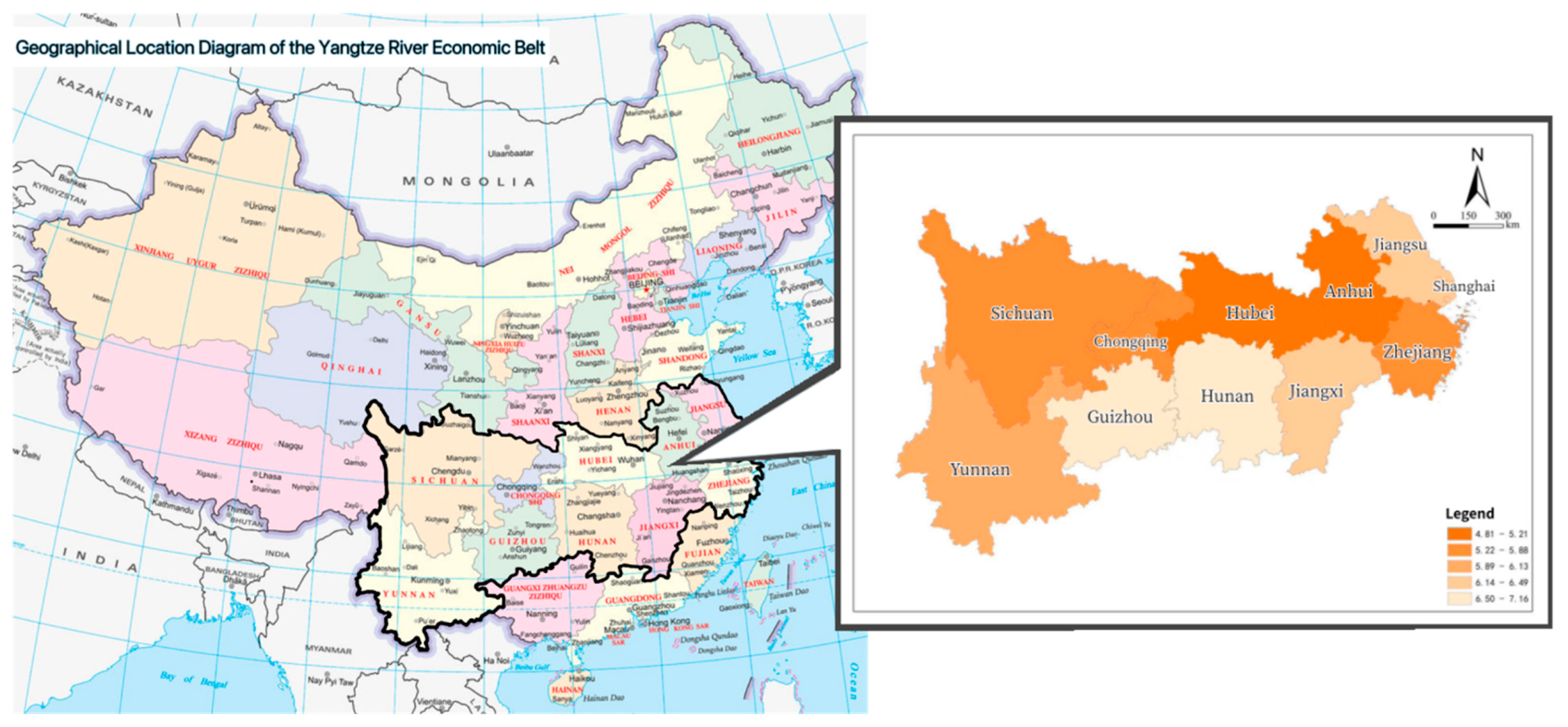
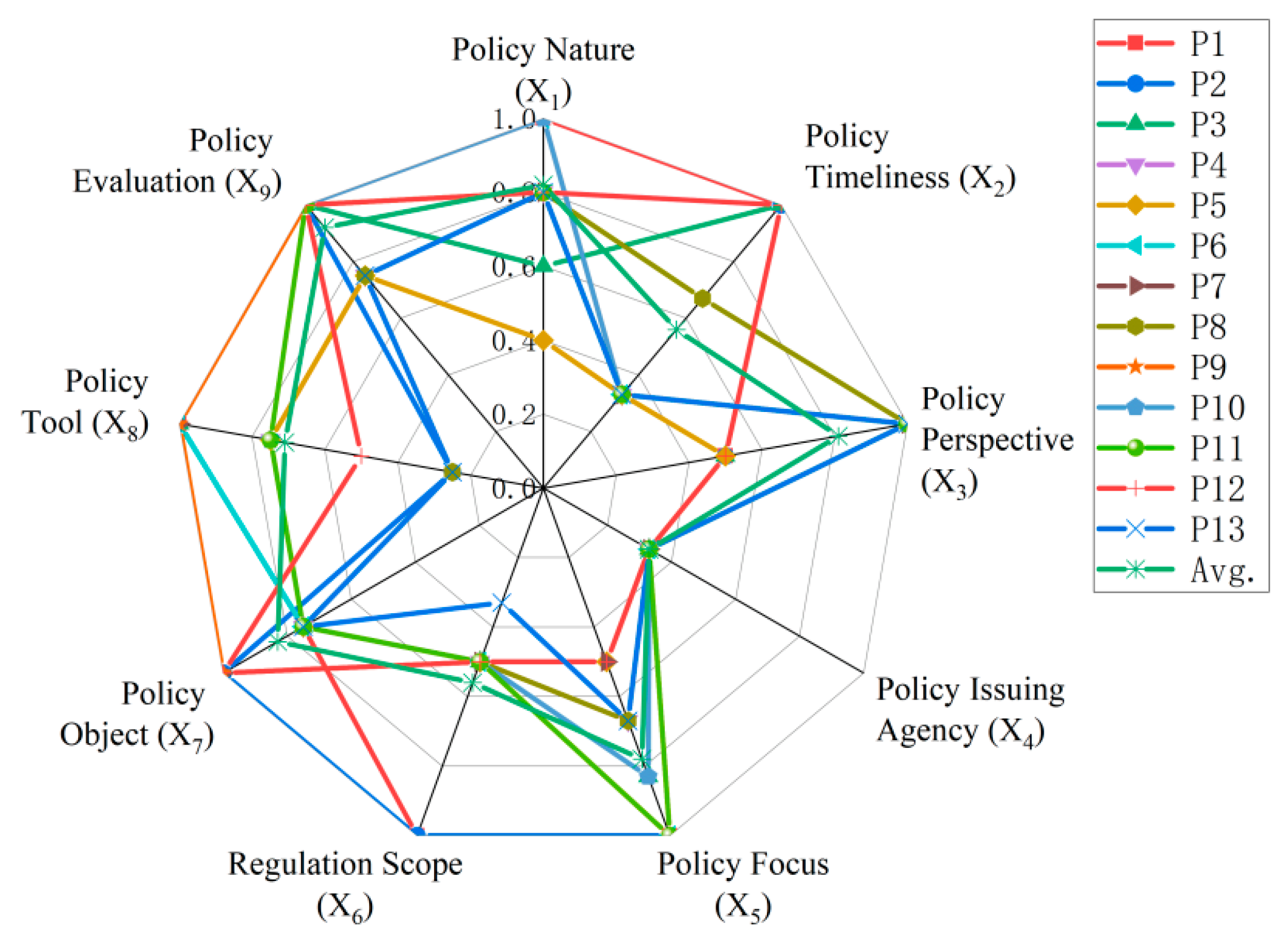
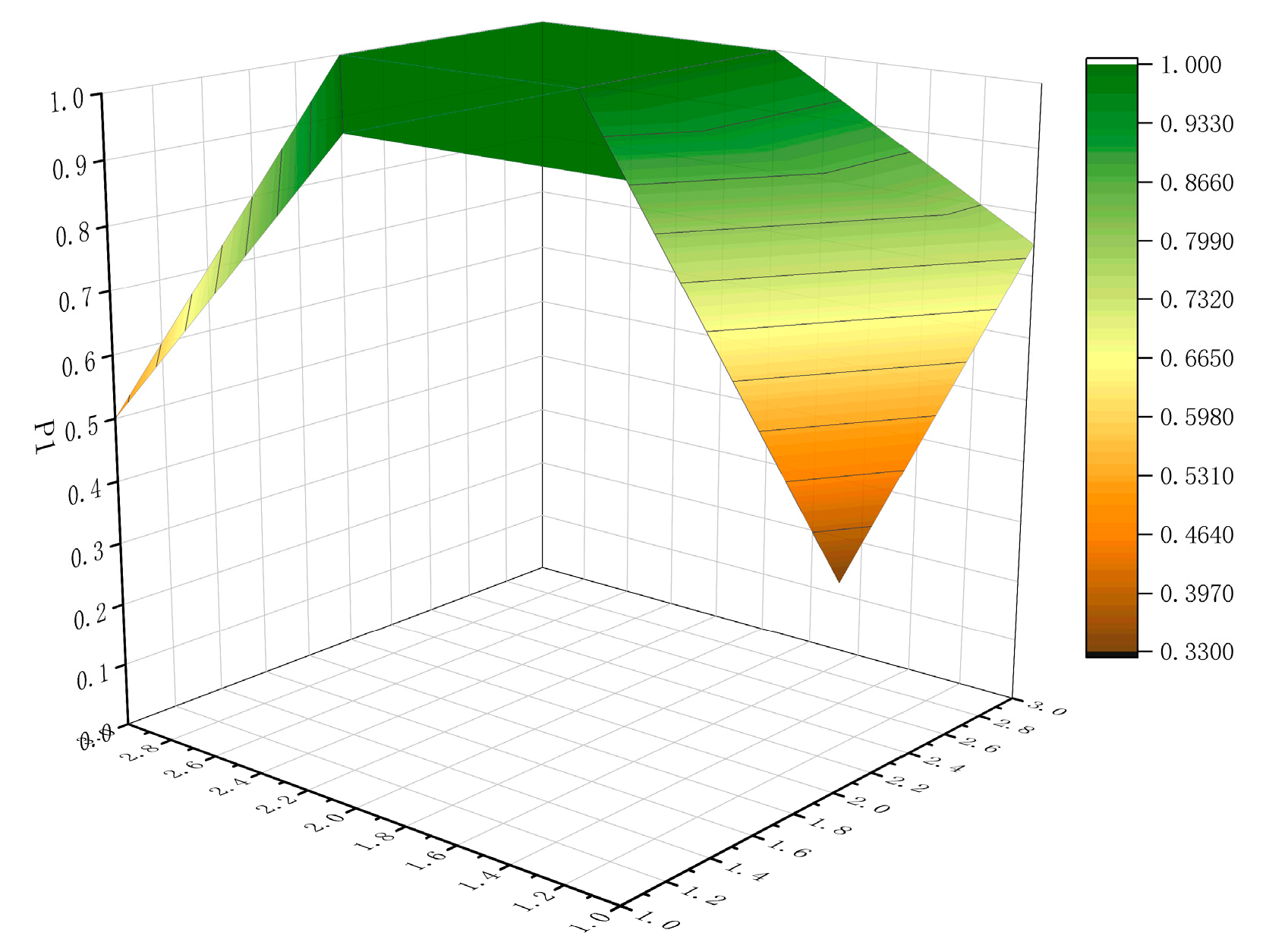



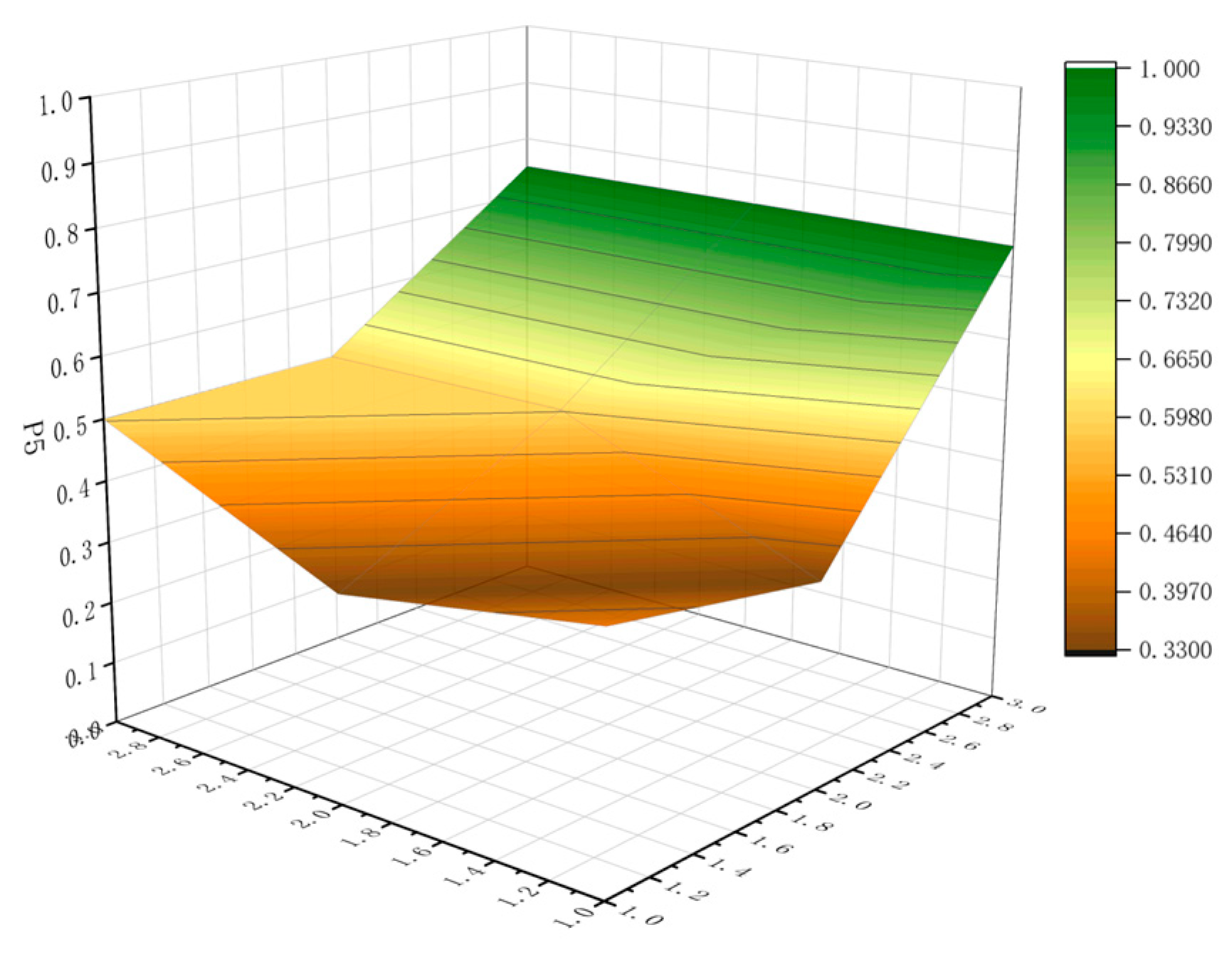
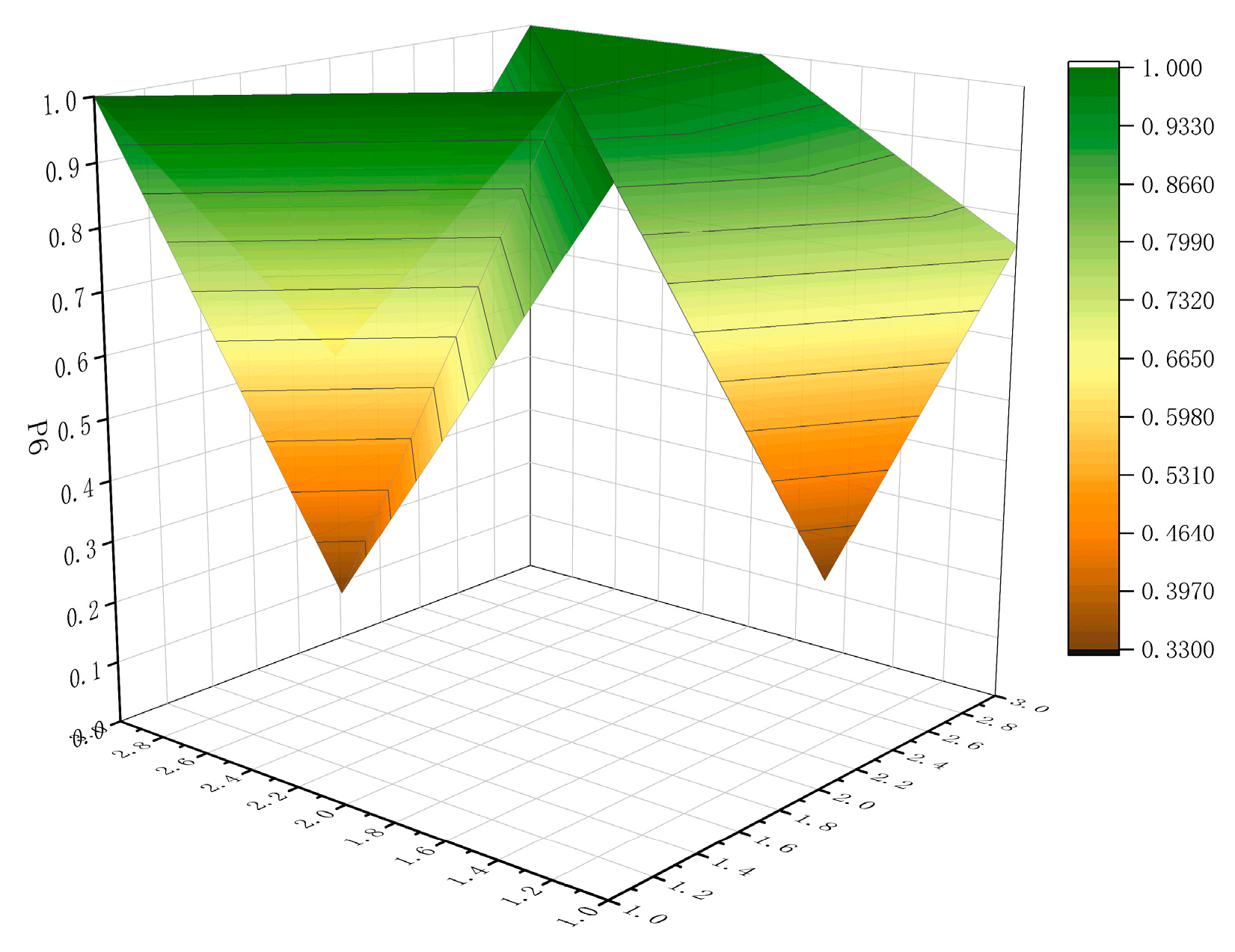


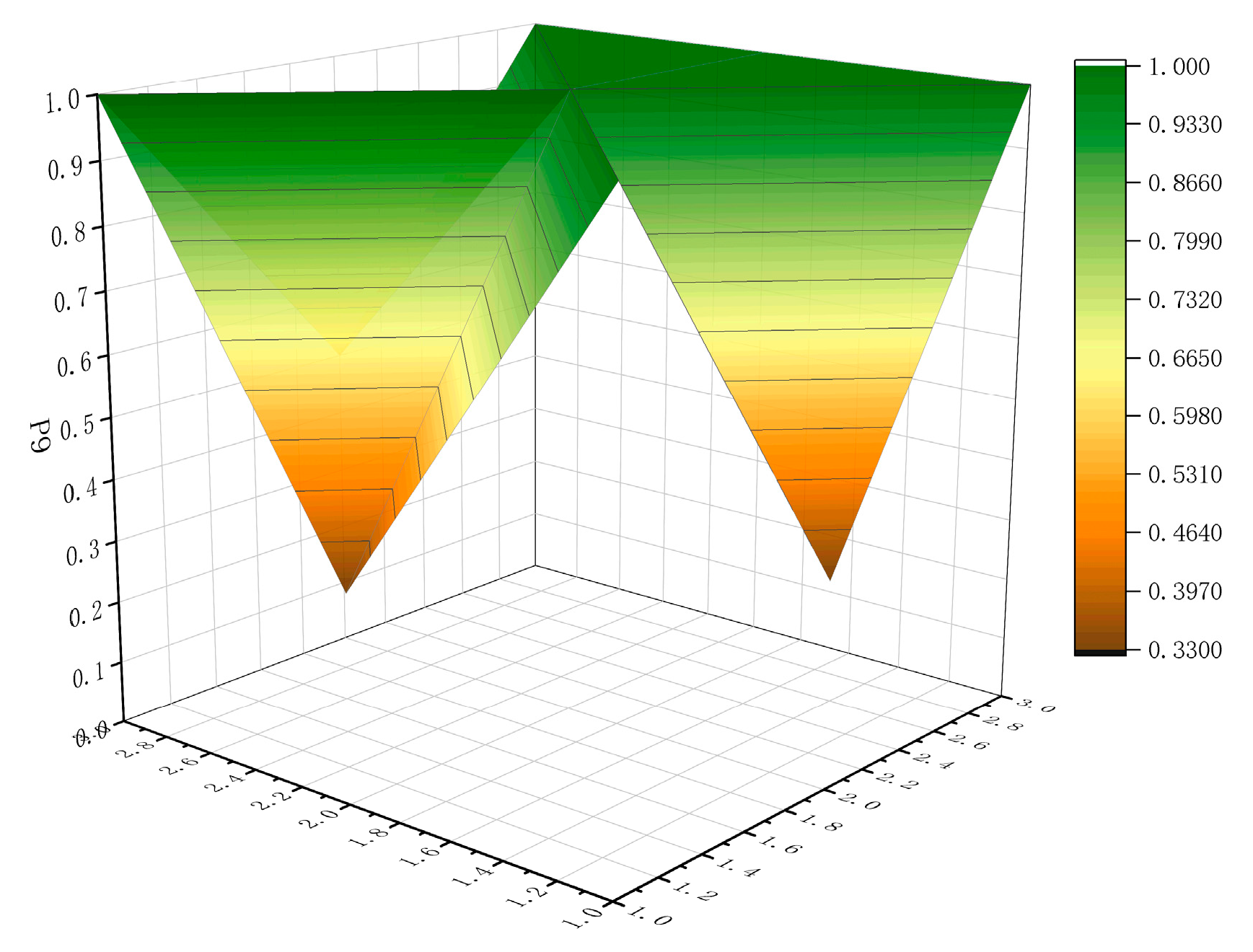
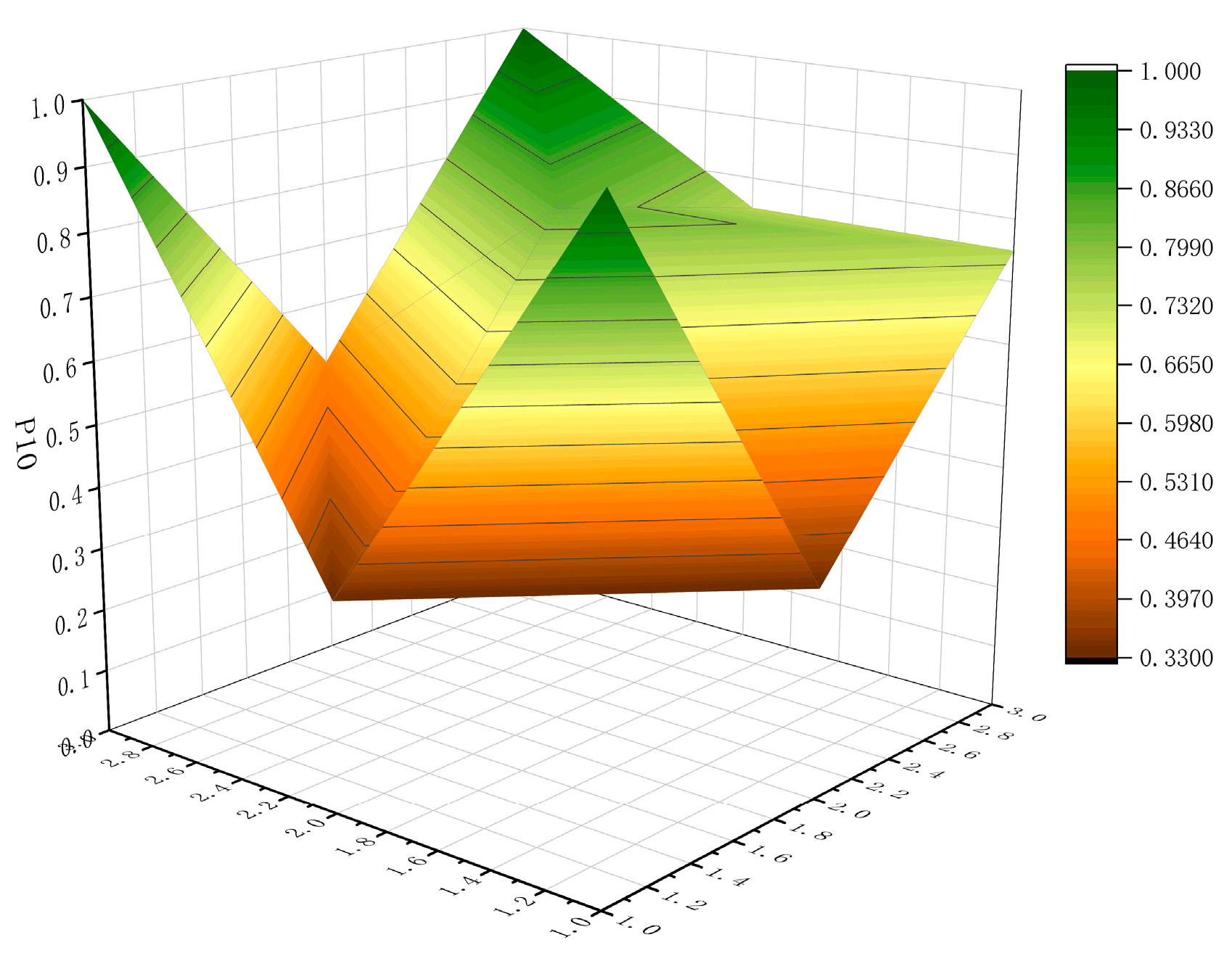
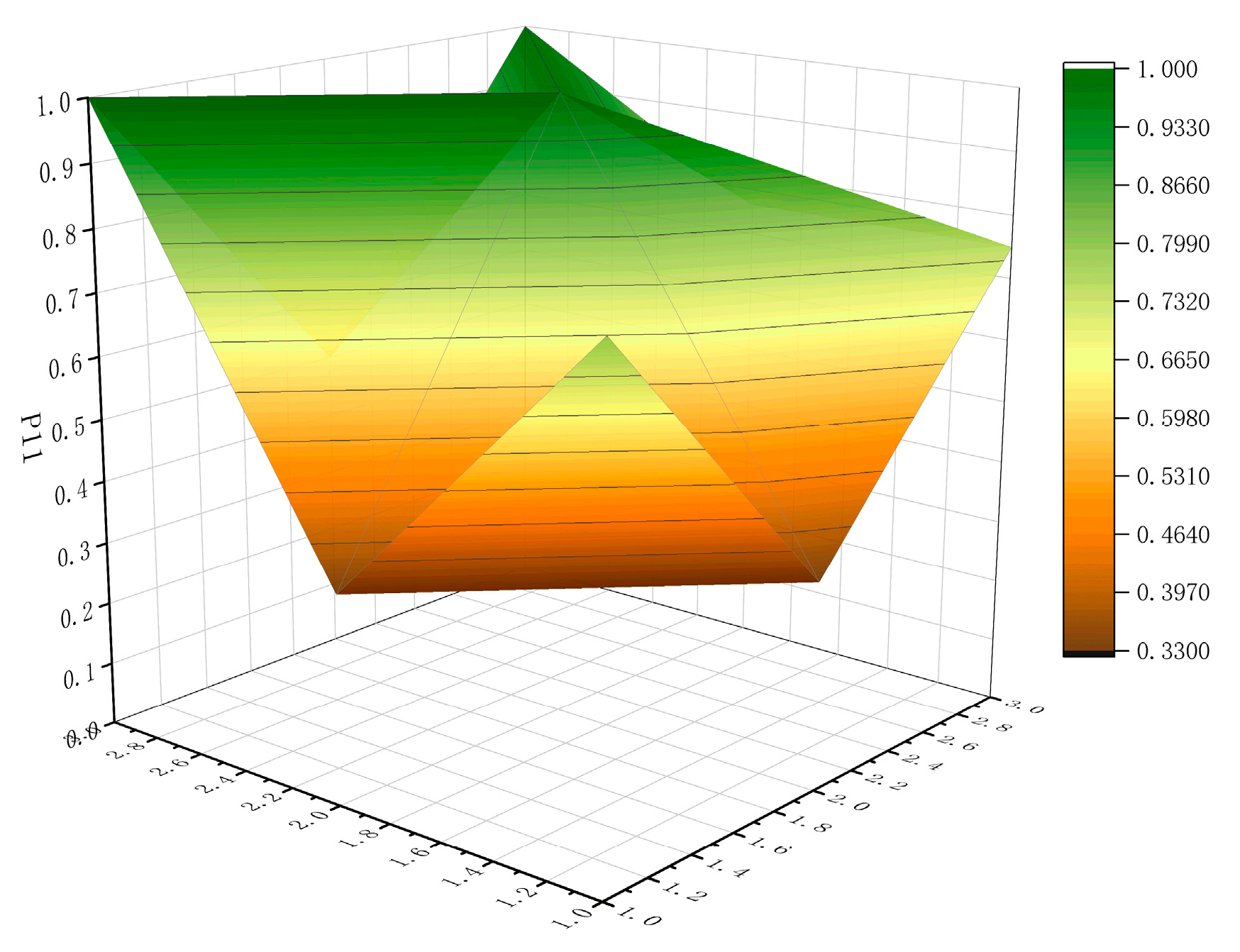
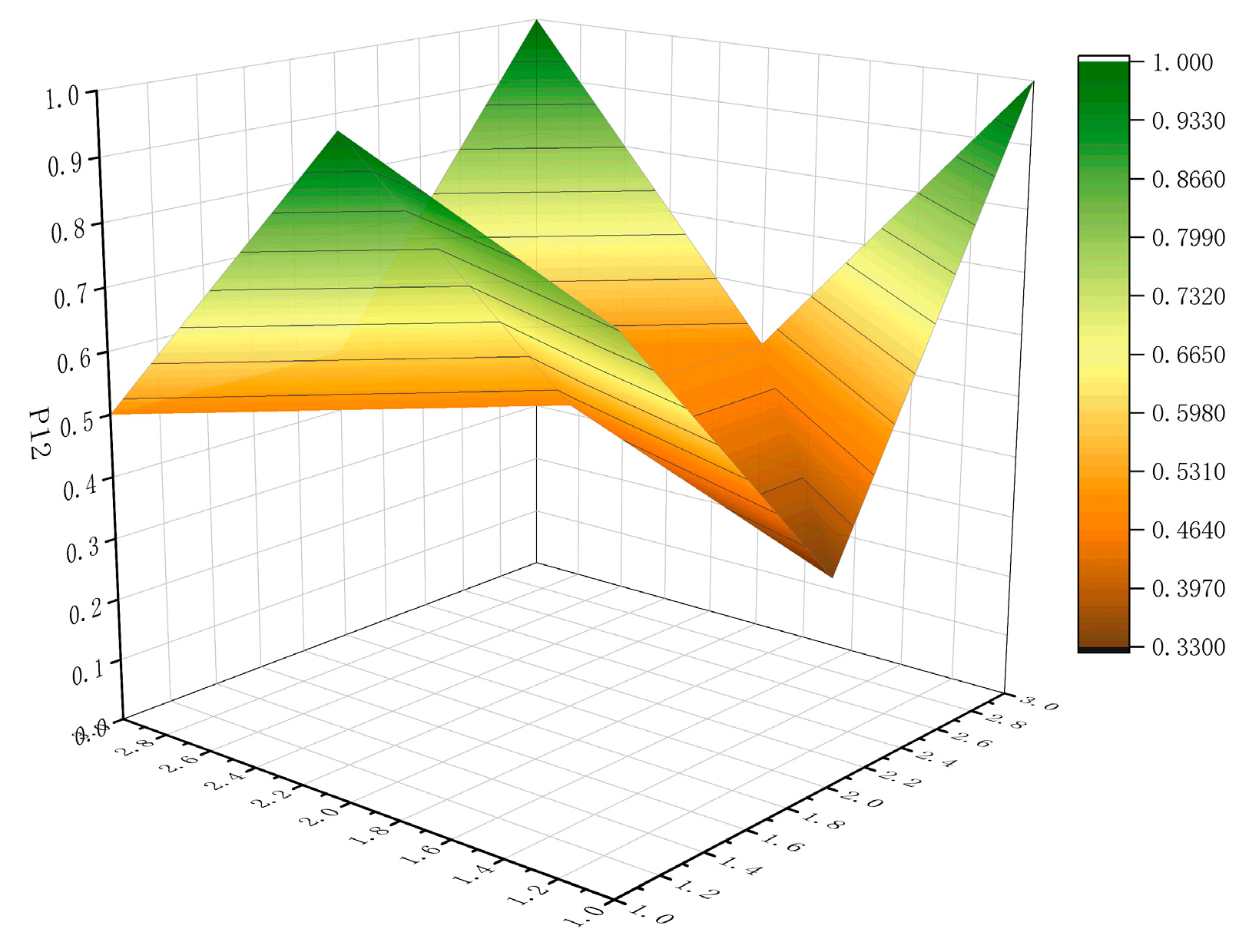
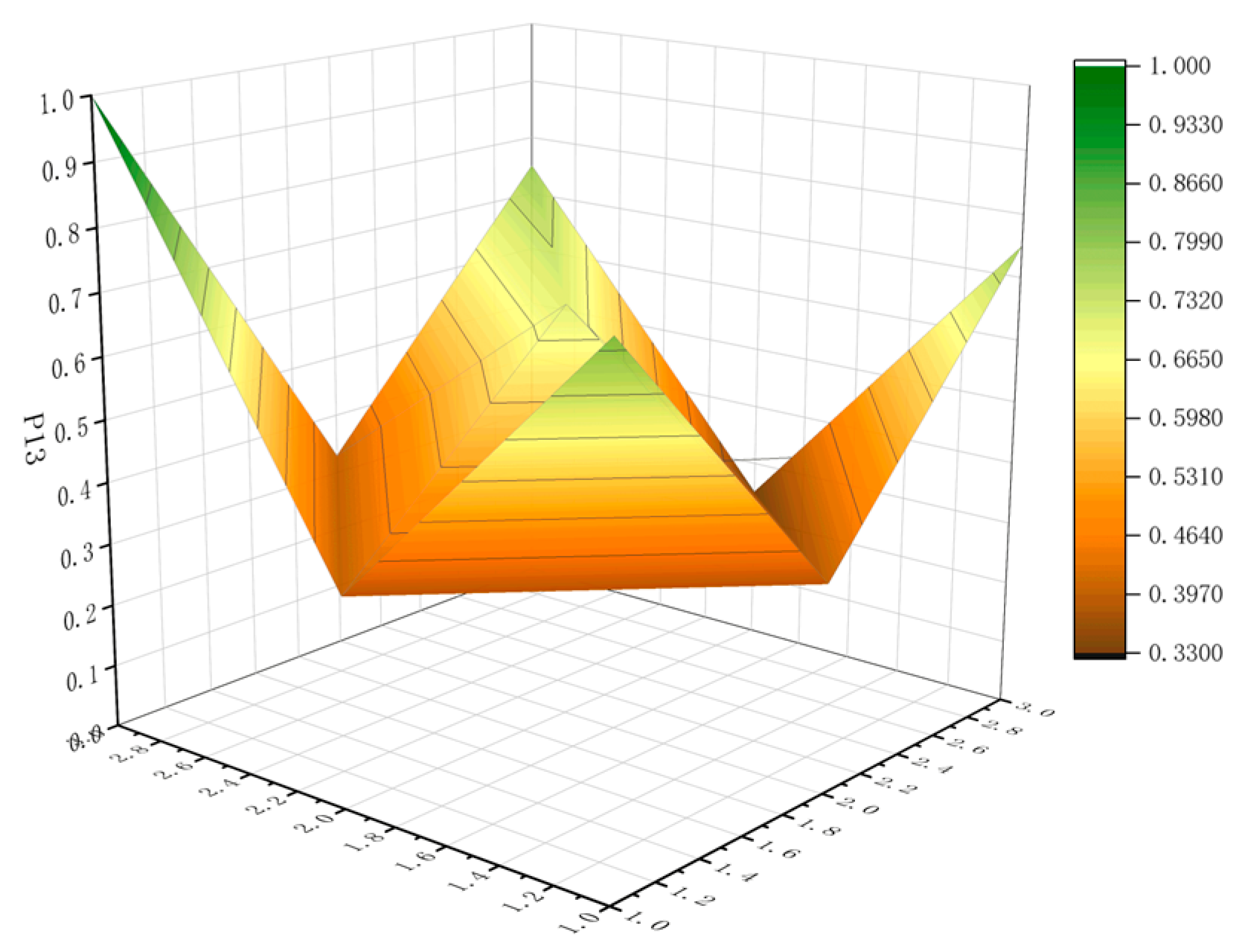
| Sequence | High Frequency Words | Frequency | Sequence | High Frequency Words | Frequency |
|---|---|---|---|---|---|
| 1 | Ecological | 1272 | 11 | Health Sector | 134 |
| 2 | Pollution | 918 | 12 | Cross-River Passage | 128 |
| 3 | Urban and Rural | 575 | 13 | Intercity | 106 |
| 4 | Violation of the Law | 324 | 14 | Dumping | 98 |
| 5 | The Main Body | 315 | 15 | Tourism Bureau | 88 |
| 6 | Financial Affairs | 160 | 16 | Reservoir Area | 82 |
| 7 | Great Protection | 150 | 17 | Regulatory | 76 |
| 8 | Breach of Regulations | 144 | 18 | Rail-Water Intermodal Transport | 71 |
| 9 | Water Resources | 143 | 19 | Tourism Commission | 62 |
| 10 | Reduction in Quantity | 141 | 20 | Expansion | 55 |
| Primary Variables | Secondary Variables | Meaning of Secondary Variable |
|---|---|---|
| Policy Nature (X1) | X1.1 Prediction | Whether the policy makes a pre-judgment on the development trend and consequences within a specific period of time in the future |
| X1.2 Suggestion | Whether the policy provides reference or constructive suggestions for achieving policy goals | |
| X1.3 Supervision | Whether the policy includes continuous tracking, evaluation, and monitoring of the implementation process and results | |
| X1.4 Guidance | Whether the policy plays a guiding and promoting role in the direction, goal, and rational utilisation of resources for eco-environmental protection | |
| X1.5 Feedback | Whether the policy requires continuous adjustment and optimisation of policy measures based on actual conditions during implementation | |
| Policy Timeliness (X2) | X2.1 Long-term | Whether the policy mentions the content of more than 5 years |
| X2.2 Medium-term | Whether the policy mentions the content of 3–5 years | |
| X2.3 Short-term | Whether the policy mentions the content within 3 years | |
| Policy Perspective (X3) | X3.1 Macro | Whether the policy is based on the macro perspective and focuses on the overall eco-environment of the YREB |
| X3.2 Micro | Whether the policy is based on the micro perspective and focuses on a specific aspect affecting the eco-environment of the YREB | |
| Policy Issuing Agency (X4) | X4.1 State Council | Whether the policy is issued by the State Council |
| X4.2 Ministries and Commissions of the State Council | Whether the policy is issued by the ministries and commissions of the State Council | |
| X4.3 Provinces and cities | Whether the policy is issued by provinces and cities | |
| Policy Focus (X5) | X5.1 Ecological protection | Whether the content of the policy involves ecological protection |
| X5.2 Pollution control | Whether the content of the policy involves pollution control | |
| X5.3 Water resource management | Whether the content of the policy involves water resource management | |
| X5.4 Biodiversity conservation | Whether the content of the policy involves biodiversity conservation | |
| X5.5 Natural disaster prevention | Whether the content of the policy involves the prevention and control of natural disasters | |
| X5.6 Ecological compensation mechanism | Whether the content of the policy involves an ecological compensation mechanism | |
| Regulation Scope (X6) | X6.1 Overall of the YREB | Is the scope of policy regulation the whole YREB |
| X6.2 Some areas of the YREB | Is the scope of policy regulation limited to a local area of the YREB | |
| Policy Object (X7) | X7.1 Local government | Whether the policy object includes local governments |
| X7.2 Enterprise | Whether the policy object includes enterprises | |
| X7.3 Social organisation | Whether the policy object includes social organisations | |
| X7.4 Relevant department | Whether the policy target includes relevant departments | |
| Policy Tool (X8) | X8.1 Organisational tools | Whether the policy involves the leading group, the river chief system, and other mechanisms |
| X8.2 Regulatory tools | Whether the policy involves mandatory regulations such as administrative orders | |
| X8.3 Inducement tools | Whether the policy involves fiscal incentives, financial subsidies, or other means | |
| X8.4 Voluntary tools | Whether the policy involves encouraging the public to participate in watershed management | |
| Policy Evaluation (X9) | X9.1 Sufficient basis | Whether the policy basis is sufficient |
| X9.2 Clear objectives | Whether the policy objectives are clear | |
| X9.3 Scientific program | Whether the policy program is scientific | |
| X9.4 Detailed planning | Whether the policy planning is detailed |
| Primary Variables | Secondary Variables |
|---|---|
| X1 | X1.1 X1.2 X1.3 X1.4 X1.5 |
| X2 | X2.1 X2.2 X2.3 |
| X3 | X3.1 X3.2 |
| X4 | X4.1 X4.2 X4.3 |
| X5 | X5.1 X5.2 X5.3 X5.4 X5.5 X5.6 |
| X6 | X6.1 X6.2 |
| X7 | X7.1 X7.2 X7.3 X7.4 |
| X8 | X8.1 X8.2 X8.3 X8.4 |
| X9 | X9.1 X9.2 X9.3 X9.4 |
| Item | Policy Name | Date of Release |
|---|---|---|
| P1 | Circular of the Ministry of Environmental Protection, the National Development and Reform Commission, and the Ministry of Water Resources on Issuing the “Eco-Environment Protection Plan for the YREB” | 13 July 2017 |
| P2 | Guiding Opinions of the State Council on Promoting the Development of the YREB by Relying on the Golden Waterway | 12 September 2014 |
| P3 | Guiding Opinions of the National Development and Reform Commission on Strengthening the Protection and Governance of Important Lakes in the YREB | 16 November 2021 |
| P4 | Notice of the Office of the Zhejiang Provincial Environmental Protection Department on Issuing the “Zhejiang Provincial Action Plan for Participating in the Eco-Environment Protection of the YREB” | 23 June 2017 |
| P5 | Notice of the Anhui Provincial Department of Transport on Further Promoting the Development of Green Shipping in the YREB | 10 March 2020 |
| P6 | Notice of the 17 Departments including Hunan Provincial Department of Ecology and Environment on Issuing the Implementation Plan for Hunan Province to Deepen the Battle to Protect and Repair the Yangtze River | 6 March 2023 |
| P7 | Notice of the General Office of the CPC Jiangxi Provincial Committee and the General Office of the People’s Government of Jiangxi Province on Issuing the “Work Plan for the ‘Joint Protection of the YREB’ in Jiangxi Province” | 22 February 2018 |
| P8 | Notice of the Chongqing Municipal People’s Government and the Sichuan Provincial People’s Government on Issuing the Action Plan for Deepening Cooperation between Sichuan and Chongqing and Further Promoting the Development of the YREB (2018–2022) | 30 June 2018 |
| P9 | Notice of Guizhou Provincial Department of Eco-Environment and Guizhou Provincial Development and Reform Commission on Printing and Distributing the Action Plan for Guizhou Province to Carry out Protection and Restoration of Ecological Barrier in the Upper Reaches of the Yangtze River and the Pearl River | 5 May 2019 |
| P10 | Notice of the General Office of the Jiangsu Provincial Government on Issuing the Implementation Plan for the Action Plan for the Protection and Restoration of the Yangtze River in Jiangsu Province | 2 June 2019 |
| P11 | Implementation Plan for Shanghai to Deepen the Battle of Yangtze River Protection and Restoration (2023–2025) | 17 May 2023 |
| P12 | Implementation Opinions of the General Office of the People’s Government of Yunnan Province on Strengthening the Protection of Aquatic Organisms in the Yangtze River | 21 March 2019 |
| P13 | Notice of the Office of the Hubei Provincial Department of Ecology and Environment on Issuing the Work Points for Ecological Environment Protection of the Yangtze River Economic Belt and Lake Water Ecological Environment Protection in 2023 | 22 May 2023 |
| Primary Variables | Secondary Variables | P1 | P2 | P3 | P4 | P5 | P6 | P7 | P8 | P9 | P10 | P11 | P12 | P13 |
|---|---|---|---|---|---|---|---|---|---|---|---|---|---|---|
| X1 | X1.1 | 1 | 1 | 0 | 0 | 0 | 1 | 1 | 0 | 1 | 1 | 1 | 1 | 1 |
| X1.2 | 1 | 1 | 1 | 1 | 1 | 1 | 1 | 1 | 1 | 1 | 1 | 1 | 1 | |
| X1.3 | 1 | 1 | 1 | 1 | 0 | 1 | 1 | 1 | 1 | 1 | 1 | 1 | 1 | |
| X1.4 | 1 | 1 | 1 | 1 | 1 | 1 | 1 | 1 | 1 | 1 | 1 | 1 | 1 | |
| X1.5 | 1 | 0 | 0 | 1 | 0 | 1 | 0 | 1 | 1 | 1 | 0 | 0 | 0 | |
| X2 | X2.1 | 1 | 1 | 1 | 0 | 0 | 0 | 0 | 0 | 0 | 0 | 0 | 1 | 0 |
| X2.2 | 1 | 1 | 1 | 0 | 0 | 0 | 0 | 1 | 0 | 0 | 0 | 1 | 0 | |
| X2.3 | 1 | 1 | 1 | 1 | 1 | 1 | 1 | 1 | 1 | 1 | 1 | 1 | 1 | |
| X3 | X3.1 | 1 | 1 | 0 | 1 | 0 | 1 | 1 | 1 | 1 | 1 | 1 | 0 | 1 |
| X3.2 | 0 | 0 | 1 | 1 | 1 | 1 | 1 | 1 | 1 | 1 | 1 | 1 | 1 | |
| X4 | X4.1 | 0 | 1 | 0 | 0 | 0 | 0 | 0 | 0 | 0 | 0 | 0 | 0 | 0 |
| X4.2 | 1 | 0 | 1 | 0 | 0 | 0 | 0 | 0 | 0 | 0 | 0 | 0 | 0 | |
| X4.3 | 0 | 0 | 0 | 1 | 1 | 1 | 1 | 1 | 1 | 1 | 1 | 1 | 1 | |
| X5 | X5.1 | 1 | 1 | 1 | 1 | 1 | 1 | 1 | 1 | 1 | 1 | 1 | 1 | 1 |
| X5.2 | 1 | 1 | 1 | 1 | 1 | 1 | 1 | 1 | 1 | 1 | 1 | 0 | 1 | |
| X5.3 | 1 | 1 | 1 | 0 | 1 | 1 | 0 | 1 | 1 | 1 | 1 | 0 | 0 | |
| X5.4 | 1 | 1 | 1 | 1 | 0 | 1 | 1 | 0 | 1 | 1 | 1 | 1 | 1 | |
| X5.5 | 1 | 1 | 0 | 1 | 0 | 1 | 0 | 1 | 1 | 0 | 1 | 0 | 1 | |
| X5.6 | 1 | 1 | 1 | 0 | 0 | 1 | 0 | 0 | 1 | 1 | 1 | 1 | 0 | |
| X6 | X6.1 | 1 | 1 | 1 | 0 | 0 | 0 | 0 | 0 | 0 | 0 | 0 | 0 | 0 |
| X6.2 | 1 | 1 | 0 | 1 | 1 | 1 | 1 | 1 | 1 | 1 | 1 | 1 | 1 | |
| X7 | X7.1 | 1 | 1 | 1 | 1 | 1 | 1 | 1 | 1 | 1 | 1 | 1 | 1 | 1 |
| X7.2 | 1 | 1 | 1 | 1 | 1 | 1 | 1 | 1 | 1 | 1 | 1 | 1 | 1 | |
| X7.3 | 0 | 1 | 0 | 0 | 0 | 0 | 1 | 0 | 1 | 0 | 0 | 1 | 0 | |
| X7.4 | 1 | 1 | 1 | 1 | 1 | 1 | 1 | 1 | 1 | 1 | 1 | 1 | 1 | |
| X8 | X8.1 | 1 | 0 | 1 | 1 | 1 | 1 | 1 | 1 | 1 | 1 | 1 | 0 | 1 |
| X8.2 | 1 | 1 | 1 | 1 | 1 | 1 | 1 | 0 | 1 | 0 | 1 | 0 | 0 | |
| X8.3 | 1 | 0 | 1 | 0 | 1 | 1 | 1 | 0 | 1 | 1 | 0 | 1 | 0 | |
| X8.4 | 1 | 0 | 1 | 1 | 0 | 1 | 1 | 0 | 1 | 1 | 1 | 1 | 0 | |
| X9 | X9.1 | 1 | 1 | 1 | 1 | 1 | 1 | 1 | 1 | 1 | 1 | 1 | 1 | 1 |
| X9.2 | 1 | 1 | 1 | 1 | 1 | 1 | 1 | 1 | 1 | 1 | 1 | 1 | 1 | |
| X9.3 | 1 | 1 | 1 | 1 | 1 | 1 | 1 | 1 | 1 | 1 | 1 | 1 | 1 | |
| X9.4 | 1 | 1 | 1 | 0 | 0 | 1 | 1 | 0 | 1 | 1 | 1 | 1 | 0 |
| Item | X1 | X2 | X3 | X4 | X5 | X6 | X7 | X8 | X9 | PMC-Index | Rank | Level |
|---|---|---|---|---|---|---|---|---|---|---|---|---|
| P1 | 1.00 | 1.00 | 0.50 | 0.33 | 1.00 | 1.00 | 0.75 | 1.00 | 1.00 | 7.58 | 1 | Excellent |
| P2 | 0.80 | 1.00 | 0.50 | 0.33 | 1.00 | 1.00 | 1.00 | 0.25 | 1.00 | 6.88 | 4 | Excellent |
| P3 | 0.60 | 1.00 | 0.50 | 0.33 | 0.83 | 0.50 | 0.75 | 1.00 | 1.00 | 6.51 | 5 | Excellent |
| P4 | 0.80 | 0.33 | 1.00 | 0.33 | 0.67 | 0.50 | 0.75 | 0.75 | 0.75 | 5.88 | 10 | Acceptable |
| P5 | 0.40 | 0.33 | 0.50 | 0.33 | 0.50 | 0.50 | 0.75 | 0.75 | 0.75 | 4.81 | 13 | Acceptable |
| P6 | 1.00 | 0.33 | 1.00 | 0.33 | 1.00 | 0.50 | 0.75 | 1.00 | 1.00 | 6.91 | 3 | Excellent |
| P7 | 0.80 | 0.33 | 1.00 | 0.33 | 0.50 | 0.50 | 1.00 | 1.00 | 1.00 | 6.46 | 7 | Excellent |
| P8 | 0.80 | 0.67 | 1.00 | 0.33 | 0.67 | 0.50 | 0.75 | 0.25 | 0.75 | 5.72 | 11 | Acceptable |
| P9 | 1.00 | 0.33 | 1.00 | 0.33 | 1.00 | 0.50 | 1.00 | 1.00 | 1.00 | 7.16 | 2 | Excellent |
| P10 | 1.00 | 0.33 | 1.00 | 0.33 | 0.83 | 0.50 | 0.75 | 0.75 | 1.00 | 6.49 | 6 | Excellent |
| P11 | 0.80 | 0.33 | 1.00 | 0.33 | 1.00 | 0.50 | 0.75 | 0.75 | 1.00 | 6.46 | 7 | Excellent |
| P12 | 0.80 | 1.00 | 0.50 | 0.33 | 0.50 | 0.50 | 1.00 | 0.50 | 1.00 | 6.13 | 9 | Excellent |
| P13 | 0.80 | 0.33 | 1.00 | 0.33 | 0.67 | 0.33 | 0.75 | 0.25 | 0.75 | 5.21 | 12 | Acceptable |
| Average | 0.82 | 0.56 | 0.81 | 0.33 | 0.78 | 0.56 | 0.83 | 0.71 | 0.92 | 6.32 |
Disclaimer/Publisher’s Note: The statements, opinions and data contained in all publications are solely those of the individual author(s) and contributor(s) and not of MDPI and/or the editor(s). MDPI and/or the editor(s) disclaim responsibility for any injury to people or property resulting from any ideas, methods, instructions or products referred to in the content. |
© 2024 by the authors. Licensee MDPI, Basel, Switzerland. This article is an open access article distributed under the terms and conditions of the Creative Commons Attribution (CC BY) license (https://creativecommons.org/licenses/by/4.0/).
Share and Cite
Wang, Z.; Xiong, Y.; Zhang, C. Quantitative Evaluation of Eco-Environmental Protection Policy in the Yangtze River Economic Belt: A PMC-Index Model Approach. Sustainability 2024, 16, 805. https://doi.org/10.3390/su16020805
Wang Z, Xiong Y, Zhang C. Quantitative Evaluation of Eco-Environmental Protection Policy in the Yangtze River Economic Belt: A PMC-Index Model Approach. Sustainability. 2024; 16(2):805. https://doi.org/10.3390/su16020805
Chicago/Turabian StyleWang, Zeyu, Yachao Xiong, and Changli Zhang. 2024. "Quantitative Evaluation of Eco-Environmental Protection Policy in the Yangtze River Economic Belt: A PMC-Index Model Approach" Sustainability 16, no. 2: 805. https://doi.org/10.3390/su16020805
APA StyleWang, Z., Xiong, Y., & Zhang, C. (2024). Quantitative Evaluation of Eco-Environmental Protection Policy in the Yangtze River Economic Belt: A PMC-Index Model Approach. Sustainability, 16(2), 805. https://doi.org/10.3390/su16020805






